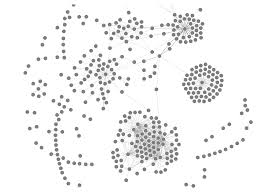Modulation in nano-telecommunication (RN and TN) receiver and transmitter of nano-telecommunication waves (PhD in nano-microelectronics)
Researcher and author: Dr. ( Afshin Rashid)
Note: The TN nano-transmitter and the electromagnetic RN receiver must be able to perform operations such as baseband processing , frequency conversion, filtering and amplification of the waves for the signals it sends or those that reach the nano-antenna from free space.
Since nano-antennas will fluctuate at terahertz frequencies, it is necessary to use FET RF transistors that are capable of operating at this high frequency .Numerous transistors have been developed and introduced in this field. At lower frequencies, nano-equipment is able to communicate over longer distances, while the efficiency of nano-devices is predicted to be very low. Therefore, nanosensors do not communicate at MHz frequencies, and higher-energy waves are needed to control a large number of nanotechnologies over a very large area. For this reason, nano-devices are connected in frequencies around 1.0 to 10 terahertz. Due to the severe limitation of nano-devices in terms of size and energy, the production of high power signals in the frequency of terahertz is not operational. Therefore, classical communication patterns based on continuous signal communication can not be implemented and for time WNSNs, short-time pulse modulation techniques (OOK-TS: Keying Off-On) are used.Wave as information carriers similar to classical communications. However, due to the severe shortage of resources and the quantum effects of materials, classical methods can not be applied directly in the field of nanotechnology. Therefore, it is necessary to use new materials and techniques.
Quantum communication in nano-telecommunications
Quantum communication is based on the transfer of tangled pairs from one place to another through exchange, repetition, and refinement. Quantum interference or quantum parallelism gives us enormous computing power, especially in source coding, where information about the entire content is required instead of individual inputs.
Molecular communication in transmitter and receiver (nano-telecommunication)
Molecular communication is a natural method of communication used by living organisms (for example, it communicates through pheromones) and is predicted to become a portable method for future nanotechnologies. The concentration of the molecule in close proximity to the receiver may be used to understand the transmitted molecular bit transmitter.
Conclusion :
The TN nanotransmitter and the electromagnetic RN receiver must be able to perform operations such as baseband processing , frequency conversion, filtering, and amplification of the waves for the signals it sends or those that reach the nano antenna from free space.
Researcher and author: Dr. ( Afshin Rashid)
PhD in Nano-Microelectronics





